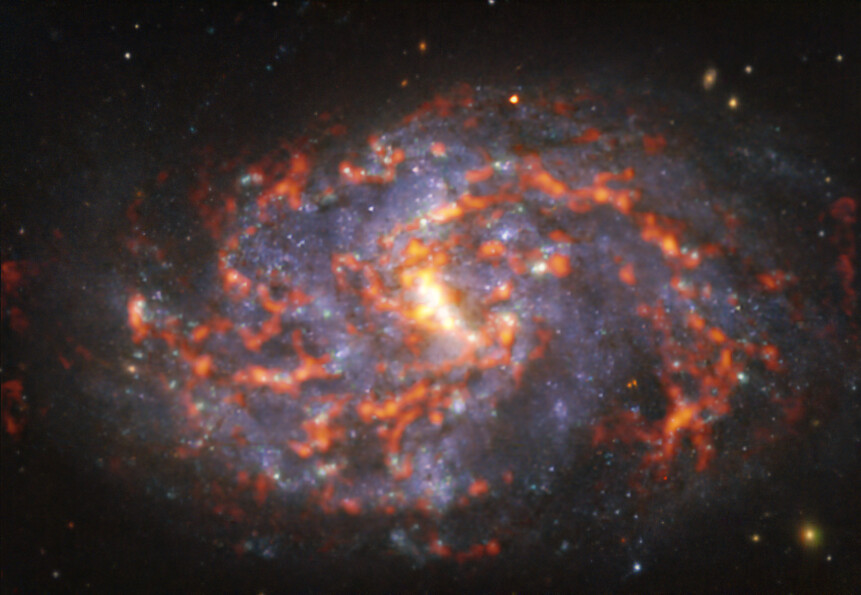The European Space Observatory has published a new image of the spiral galaxy NGC 1087. The image combines data from several observations at different wavelengths.
NGC 1087 is a spiral galaxy with a jumper located at a distance of about 80 million light-years from Earth in the constellation of the Whale. Its diameter is estimated at 86,800 light-years. In the new image, the spiral galaxy curled up like a sleeping snake.

NGC 1087 has a very small core and a very short jumper. At the same time, an active new star formation occurs in the junction area.
“The ominous—looking red hue is clouds of cold molecular gas, the raw material from which stars are formed,” the EKO notes.
To create this image, the researchers combined images of the ALMA radio telescope complex in Atacama and the Very Large Telescope (VLT) ECO, located on the Cerro Paranal Mountain in Chile. Using ALMA, the researchers obtained an image of clouds of molecular gas (red glow), and VLT took pictures of clusters of old, formed stars (bluish areas in the background).
The analysis of images obtained at various wavelengths helps researchers to study the internal physical properties of stars, gas and dust in the galaxy, the EKO report notes. By comparing and analyzing the results, astrophysicists better understand the processes of star formation.
